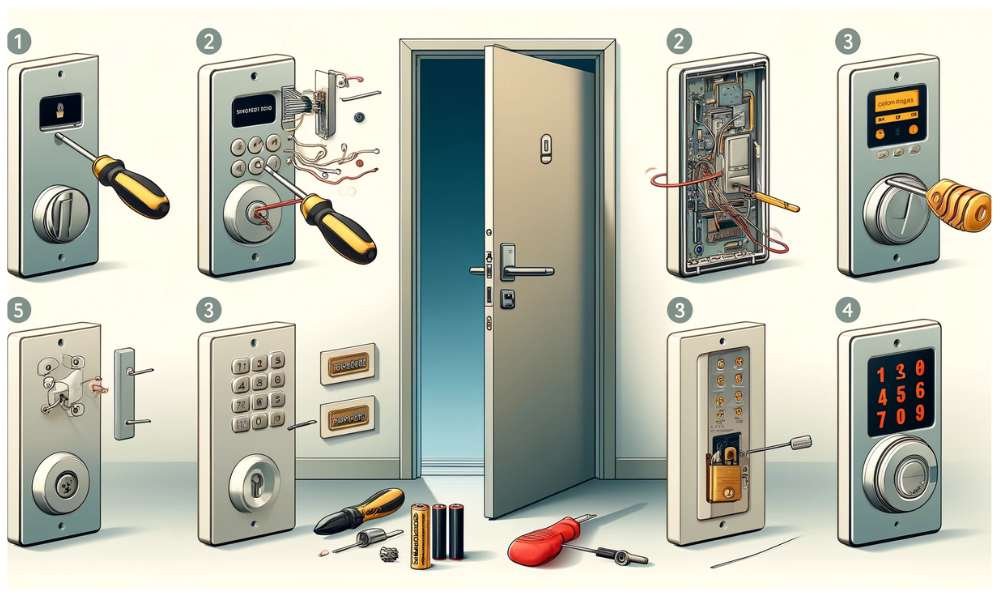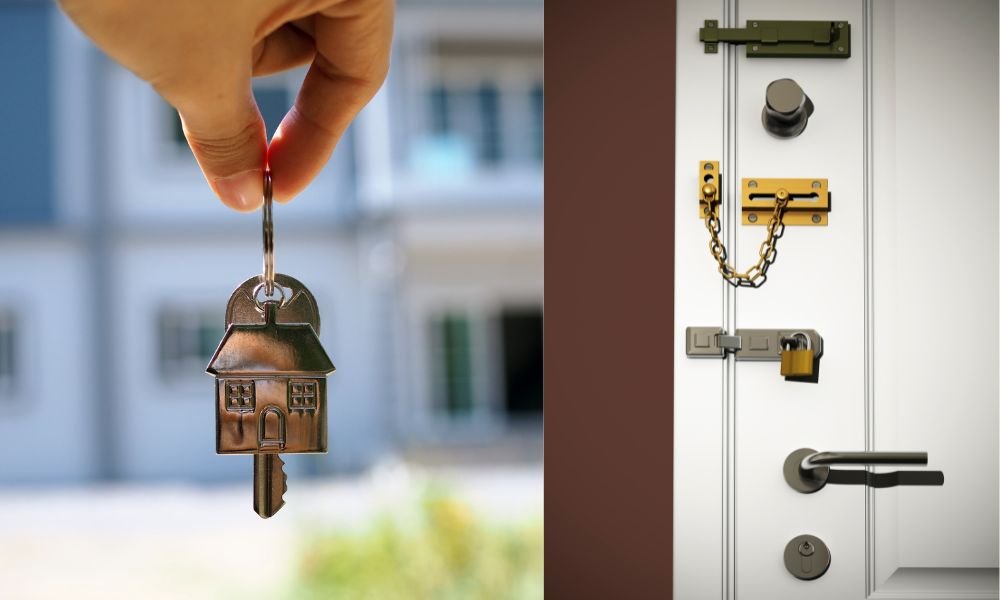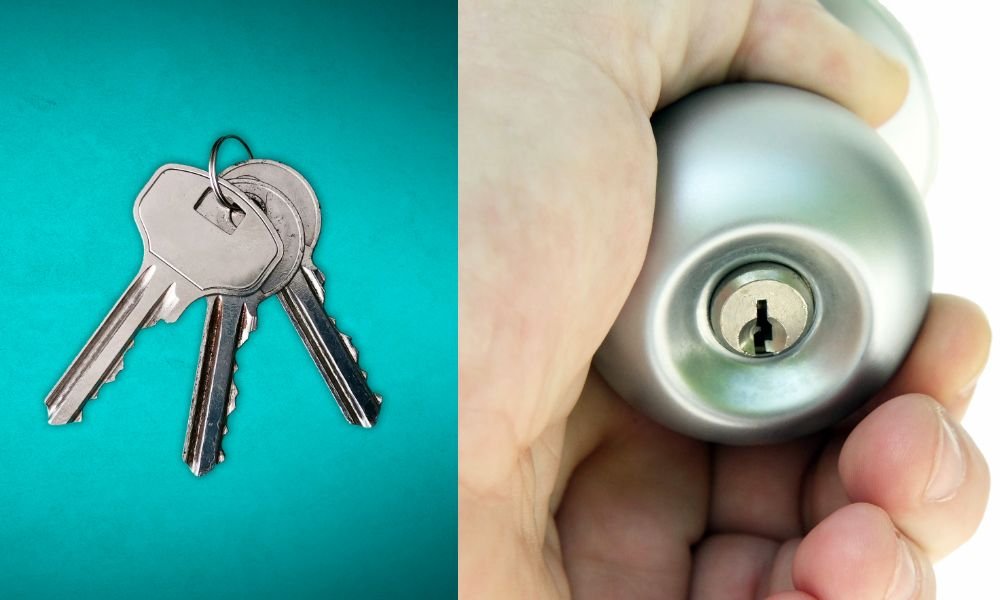Keypad door locks are a popular choice for securing homes and businesses due to their convenience and security features. However, like any electronic device, they can sometimes encounter issues. This comprehensive guide will walk you through the common problems associated with keypad door locks and provide step-by-step solutions about how to Fix a Keypad Door Lock? By the end of this article, you’ll be equipped to troubleshoot and resolve many issues on your own, ensuring this operates smoothly and securely.
Common Problems
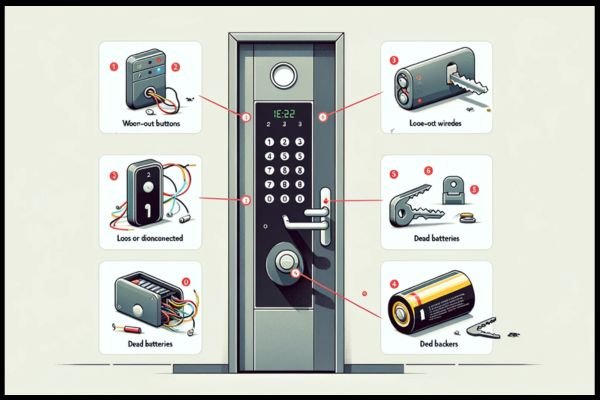
Before diving into the troubleshooting steps, it’s essential to identify the common issues that can affect it:
Dead Batteries: One of the most common problems is dead or low batteries, which can prevent them from functioning correctly.
Worn-Out Keypad: Over time, the keypad may wear out due to frequent use, causing it to become unresponsive.
Mechanical Issues: Problems with the lock’s internal mechanisms can also prevent it from working properly.
Software Glitches: Like any electronic device, keypad door locks can experience software glitches that require resetting or reprogramming.
Incorrect Code Entry: Frequent incorrect code entries can lock the system, preventing access.
Step-by-Step Guide to Fixing

1. Check and Replace Batteries
The first step in troubleshooting a malfunction is to check the batteries. Here’s how to do it:
Locate the Battery Compartment: Most locks have a battery compartment located on the interior side of the door.
Remove the Cover: Use a screwdriver to remove the cover of the battery compartment.
Check the Batteries: Remove the batteries and check them using a battery tester. If the batteries are dead or low, replace them with fresh ones.
Reinstall the Cover: After replacing the batteries, reinstall the cover and test the lock to see if it functions correctly.
2. Clean the Keypad
If the keypad is unresponsive or certain buttons don’t work, it may be due to dirt or debris. Here’s how to clean it:
Turn Off the Lock: If possible, turn it off to prevent any accidental code entries.
Clean the Keypad: Use a soft, dry cloth to clean the surface of the keypad. For stubborn dirt, you can use a slightly damp cloth, but avoid using any harsh chemicals.
Test the Keypad: After cleaning, turn it back on and test the keypad to see if it responds better.
3. Inspect and Fix Mechanical Issues
Mechanical issues can also cause malfunction. Here’s how to inspect and fix them:
Remove the Lock from the Door: Use a screwdriver to remove from the door.
Inspect the Internal Mechanisms: Check for any obvious signs of wear or damage to the internal mechanisms.
Lubricate Moving Parts: Apply a small amount of graphite lubricant to the moving parts to ensure they operate smoothly.
Reassemble the Lock: Reassemble and reinstall it on the door. Test to see if it functions correctly.
4. Reset the Lock
If this is experiencing software glitches or you’ve forgotten the code, you may need to reset it. Here’s how to do it:
Find the Reset Button: Most locks have a reset button located inside the battery compartment or on the interior side of the lock.
Press and Hold the Reset Button: Use a small object, such as a paperclip, to press and hold the reset button for a few seconds.
Reprogram the Lock: After resetting, you’ll need to reprogram it with a new code. Follow the manufacturer’s instructions for your specific lock model to do this.
Test the New Code: After reprogramming, test the new code to ensure it works correctly.
5. Address Code Entry Issues
If this is frequently locking out due to incorrect code entries, it may need to be reprogrammed or have the entry limit adjusted. Here’s how to address these issues:
Reprogram the Lock: Follow the manufacturer’s instructions to reprogram with a new code.
Adjust Entry Limit: Some locks allow you to adjust the number of incorrect entries allowed before the system locks out. Check your lock’s manual to see if this is an option and adjust it if necessary.
Educate Users: Ensure that all users are familiar with the correct code and understand how to enter it properly.
Preventive Maintenance Tips
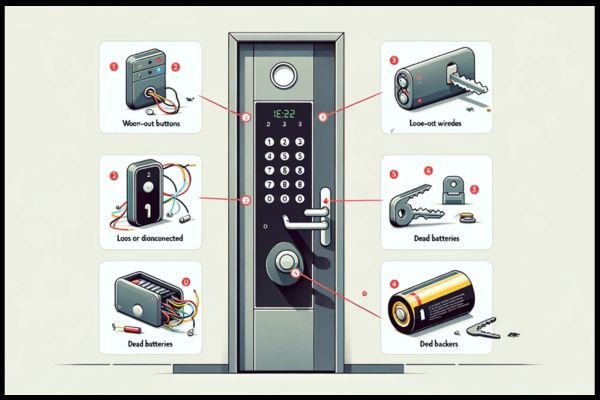
To keep your lock functioning smoothly, regular preventive maintenance is essential. Here are some tips:
Regularly Check Batteries: Check the batteries every few months and replace them as needed to prevent unexpected lockouts.
Keep the Keypad Clean: Regularly clean the keypad to prevent dirt and debris from affecting its responsiveness.
Inspect the Lock Periodically: Periodically inspect the lock’s internal mechanisms for signs of wear or damage and address any issues promptly.
Update Software: If this has software that can be updated, check for updates regularly and install them to keep the one running smoothly.
When to Call a Professional

While many issues with this can be fixed with a bit of DIY troubleshooting, some problems may require professional assistance. Here are some scenarios where it’s best to call a locksmith or the lock’s manufacturer:
Persistent Issues: If the lock continues to malfunction despite your efforts to fix it, a professional may be able to diagnose and resolve the problem.
Complex Mechanical Problems: If this has internal mechanisms are severely damaged or worn, a professional locksmith can repair or replace the necessary parts.
Warranty Coverage: If this is still under warranty, contacting the manufacturer for repairs or replacement may be the best option.
Conclusion
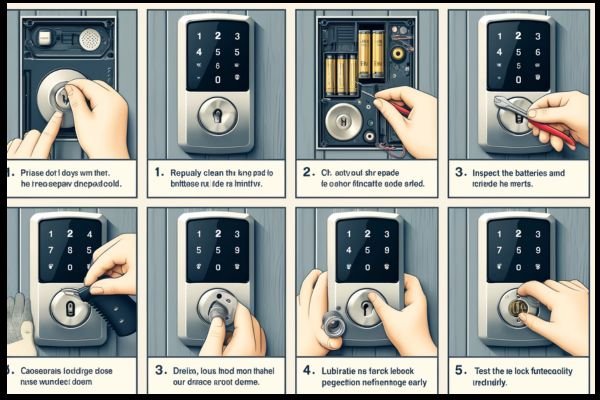
Keypad door locks offer a convenient and secure way to protect your home or business. However, like any electronic device, they can encounter issues that require troubleshooting and repair. By following the steps outlined in this guide, you can address common problems and ensure it continues to function correctly. Remember to perform regular preventive maintenance and don’t hesitate to call a professional if needed. With proper care and attention, your keypad door lock can provide reliable security for years to come.

